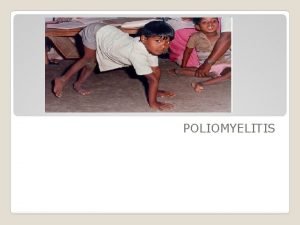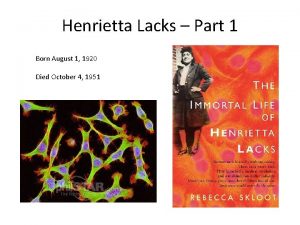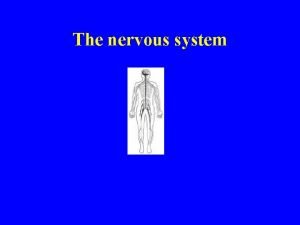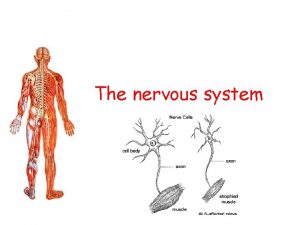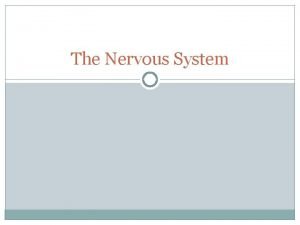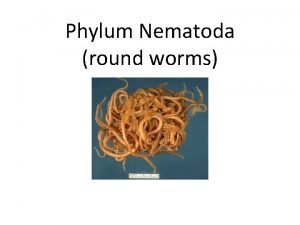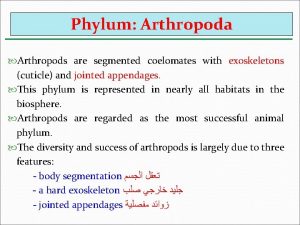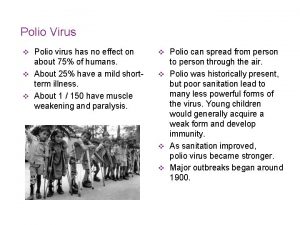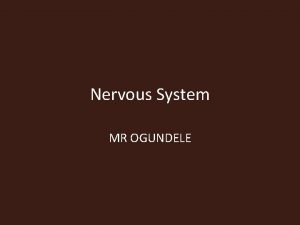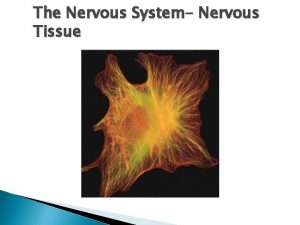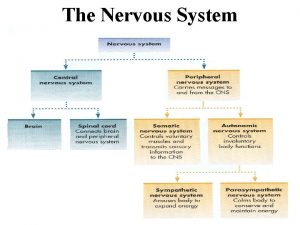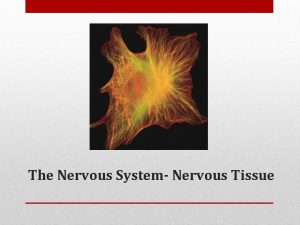Polio virus Nervous system Polio is a virus











































- Slides: 43

Polio virus • Nervous system: Polio is a virus that infects the nervous system of humans (only) • Paralysis: It can cause temporary or permanent paralysis or death • Vaccine : There is a vaccine for polio • Eradicate : The World Health Organization plans to eradicate polio in the next decade • Continue: Polio outbreaks continue to occur in areas in which many are not vaccinated

• Since vaccine has become widespread in the United States, cases of polio are rare. • However, polio remains a problem in many parts of the world. •



• Poliovirus infects human cells by binding to an immunoglobulin-like receptor, CD 155, (also known as the poliovirus receptor (PVR) on the cell surface • Poliovirus is a positive stranded RNA virus. Thus the genome enclosed within the viral particle can be used as messenger RNA and immediately translated by the host cell.

Immune system avoidance • Poliovirus uses two key mechanisms to evade the immune system. First, it is capable of surviving the highly acidic conditions of the gastrointestinal tract, allowing the virus to infect the host and spread throughout the body via the lymphatic system. • Second, because it can replicate very quickly, the virus overwhelms the host organs before an immune response can be mounted. [5]


polio virus


3 -D image of poliovirus

5 -fold Axis 3 -fold Axis 2 -fold Axis VP 1 VP 2 VP 3

• For decades, no one knew what poliovirus looked like, since viruses cannot be seen under a microscope. In 1985, a team led by James Hogle of Harvard Medical School obtained high-resolution, 3 D images of poliovirus, and today, the newly formed Children's Hospital Boston -- Harvard Medical School structural biology unit is heir to the Enders tradition.

• Led by Stephen Harrison, this group is using a variety of sophisticated tools like X-ray crystallography and molecular electron microscopy to obtain detailed, dynamic, 3 D views -- accurate down to the atom -- of how viruses move, transfer information and reconfigure themselves to attack their victims. These images are shedding light on many of today's viral scourges, such as HIV, dengue and rotavirus, and providing new leads for treatment and vaccine development.

Polio virus

• An ancient Egyptian stele, portraying a prince with a withered leg - probably polio. © WHO/GPEI




Researchers Glimpse Polio Virus as it Enters Host Cell Contact: See for a moment 3 -D structures The image on the left shows a naked polio virus. The polio virus on the right is studded with 60 twig Small thin stem -like structures, the receptors. on a tree


• The polio virus lives in the throat and intestinal tract of infected persons. • The virus enters the body through the mouth, usually from hands contaminated with the stool of an infected person. Objects, such as eating utensils, can also spread the virus. • Food and water are not thought to play a major role in the spread of polio. •

WHO • Polio cases have decreased by 99. 8% since 1988, from an estimated 350 000 cases to 483 in 2001*. The reduction is the result of the global effort to eradicate the disease.

Areas with highintensity transmission • Together, these countries accounted for more than 85% of the new polio caseload in 2001. They are characterized by having areas with large populations and low routine immunization coverage, sub-optimal sanitation and relatively wide geographical distribution of the wild poliovirus. These countries are: • India • Pakistan/Afghanistan • Nigeria/Niger






Symptoms • Not everyone will experience all the symptoms, which vary according to the type of polio one has. In mild polio the symptoms are: • Headache • Nausea/vomiting • General discomfort or slight fever for up to three days.

• In non-paralytic polio, the symptoms are similar to mild polio with the addition of: • Moderate fever • Stiff neck and back • Fatigue • Muscle pain

Individuals with paralytic polio will experience: • • Tremors Muscle weakness Fever Stiffness Constipation Muscle pain and spasms Difficulty swallowing

预防 • 口服脊髓灰质炎减毒活疫苗糖丸(1957年 发明) Oral vaccination with live vaccine • Vaccination programs have • eradicated it from the • Western world and promise • to eliminate it globally Dr Alber Sabin




新进展Date: Thu, 11 Jul 2002 Scientists have built the virus that causes polio from scratch in the lab, using nothing more than genetic sequence information from public databases and readily available technology. The fact proves that even if all the polio virus in the world were destroyed, it Bring would be easily possible to resurrect the back into crippling disease, says Aniko Paul at the use State University of New York at Stony Brook, one of the researchers







 Neural circuits the organization of neuronal pools
Neural circuits the organization of neuronal pools Sensory input and motor output
Sensory input and motor output Processes neuron
Processes neuron Nervous system and digestive system
Nervous system and digestive system Endocrine system and nervous system
Endocrine system and nervous system Amino acid-based hormones
Amino acid-based hormones Endocrine system
Endocrine system Post polio sundrome
Post polio sundrome What is polio disease
What is polio disease Tripod sign polio
Tripod sign polio Medial longitudinal ark
Medial longitudinal ark Hans tolzin wikipedia
Hans tolzin wikipedia Polio
Polio Opv medical abbreviation
Opv medical abbreviation Porto polio
Porto polio Syphilus
Syphilus Cirrh/o medical term
Cirrh/o medical term Polio
Polio Papa lolos
Papa lolos Polio
Polio Chemical messengers of the nervous system
Chemical messengers of the nervous system Phylum platyhelminthes examples
Phylum platyhelminthes examples The nervous system is made up of
The nervous system is made up of Three basic functions of the nervous system
Three basic functions of the nervous system Learning objectives of nervous system
Learning objectives of nervous system Chapter 7 the nervous system
Chapter 7 the nervous system What is stimuli in nervous system
What is stimuli in nervous system Spinal cord structure
Spinal cord structure Autonomic nervous system visceral
Autonomic nervous system visceral Alpha 1 receptors
Alpha 1 receptors Cervical nerve exit
Cervical nerve exit Sns somatic nervous system
Sns somatic nervous system Brain scienstructable
Brain scienstructable Somatic motor neuron
Somatic motor neuron Nematoda
Nematoda Meristomata
Meristomata Arthropods structure
Arthropods structure Nervous system of arthropods
Nervous system of arthropods Central and peripheral nervous system
Central and peripheral nervous system Parasympathatic
Parasympathatic Nervous system in coelenterates
Nervous system in coelenterates Autonomic nervous system consists of
Autonomic nervous system consists of Sympathetic nervous system
Sympathetic nervous system Section 35-5 drugs and the nervous system answer key
Section 35-5 drugs and the nervous system answer key









